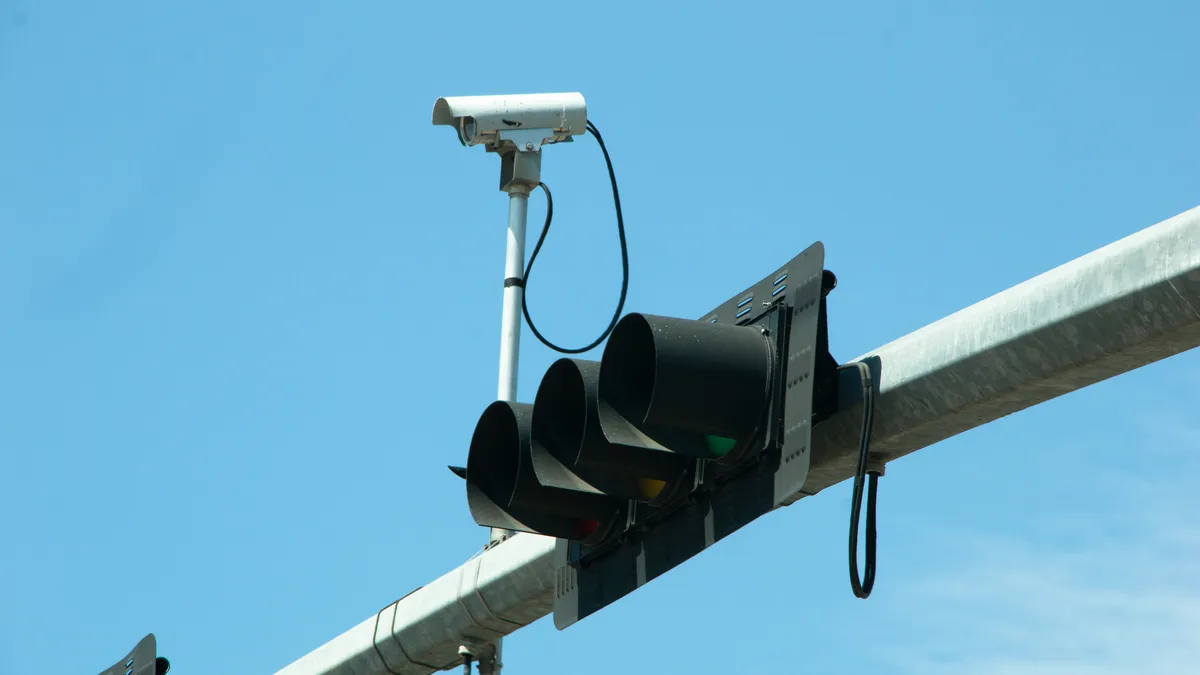As traffic deaths continue to rise across the U.S., many cities have turned to automated enforcement technologies, such as red-light cameras and speed cameras that issue tickets to violators without the need for on-site police presence.
These cameras have proven to reduce accidents and violations but come with a checkered past and ongoing concerns about privacy and racial equity.
As of July 2023, 335 communities operated red-light cameras and 195 deployed speed cameras, according to the Insurance Institute for Highway Safety. From 2018 to 2022, states enacted more than 50 laws related to automated traffic enforcement. However, as of July 2021, 11 states have prohibited or restricted cameras. While the popularity of red light cameras peaked in 2012, the number of speed cameras is on the rise.
“Speeding accounts for nearly one-third of all fatalities on our roads and puts everyone at risk, including people in other vehicles, pedestrians, cyclists, motorcyclists and people with disabilities,” National Highway Traffic Safety Administration Acting Administrator Ann Carlson said in a July 10 press release. In 2021, more than 1,100 people were killed in crashes where a driver ran a red light, according to the IIHS.
Red-light cameras are employed at intersections, while speed cameras can be used along roads and may be stationary or mobile. The cameras take a picture of a vehicle’s license plate if the driver runs a red light or is speeding. In some jurisdictions, the tickets go to the driver; elsewhere, they are issued to the vehicle owner.
A checkered past
The first speed cameras in the U.S. were installed in 1987 in Peoria and Paradise Valley, Arizona, while red-light cameras were first used in New York City in the early 1990s.
It’s not just that drivers dislike getting a ticket in the mail. Communities worry about widespread surveillance and how license plate data can be used. In Chicago, a ProPublica analysis found that residents in majority Black and Latino neighborhoods got twice as many red light tickets as those in White areas.
In a 2021 paper, University of Texas at Austin researchers found that camera deployments happened with limited involvement of the local communities, fostering concerns about police surveillance.
The Centers for Disease Control and Prevention recommends that speed and red-light cameras “should be used to aid traditional enforcement efforts or in locations where traffic stops are impractical or unsafe.” But police ranks nationwide are thinning. In a 2022 interview, John Bagnardi, executive director of the American Association of State Troopers, told Smart Cities Dive that recruiting difficulties, officer retirements and the effects of the COVID-19 pandemic combined to reduce traffic enforcement efforts.
The argument for enforcement tech
With fewer officers on the street, cities turned to technology. “Cities are increasing the number of sensors that they have in the city to detect what’s going on,” said Jon Baldwin, executive vice president of government solutions at Verra Mobility, a smart mobility technology company.
Verra Mobility provides red-light and speed cameras along with radar and lidar sensors for some 270 customers in the U.S., including New York City and Philadelphia, said a company spokesperson.
In New York City, the average daily violations per red-light camera dropped from more than 30 in 1994 to seven in 2021, according to a report by the city’s Transportation Department. The city has over 2,000 speed enforcement cameras in school zones and experienced a 73% decrease in speeding at fixed camera locations from 2019 to 2021, resulting in one-third fewer pedestrian injuries.
Philadelphia’s speed camera program along Roosevelt Boulevard led to a 36% decrease in crashes, according to an April 2023 report from the Philadelphia Parking Authority. The city also has a growing red-light camera program, now at 34 intersections. According to a 2022 Philadelphia Parking Authority report, the program improved driving conditions on Roosevelt Boulevard, substantially reducing red-light running at two of the city’s most dangerous intersections.
In addition to speed and red-light cameras, cities are also turning to mobile cameras to monitor bus and bike lane violations, Baldwin said. That includes camera-equipped transit buses and cameras mounted on the side of school buses that watch for drivers passing a stopped school bus. In Australia, two states are using cameras to detect distracted driving, but no U.S. states have allowed that, Baldwin said.
Citing new or growing installations of automated enforcement technologies in Colorado, Connecticut and Florida, Baldwin said, “People understand that these programs are very effective, and they’re trying to find ways to get them to protect the people they care about, the most vulnerable people on the roads.”
Automated traffic enforcement programs can also be money-makers for cities. New York City’s red-light cameras brought in nearly $334 million over the 27-year period from 1994 to 2021 and netted almost $228 million from 2014 to 2021 from its speed enforcement cameras.




















